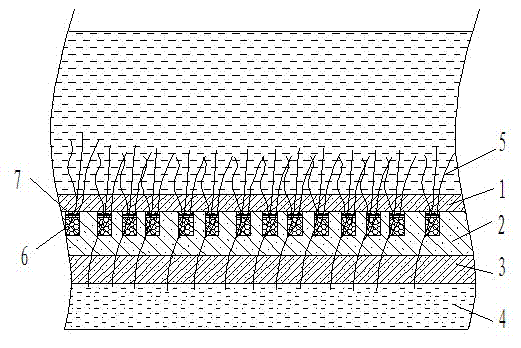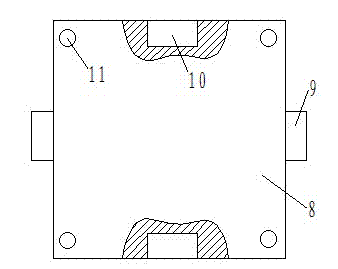In-situ ecological restoration method for riverway polluted sediment
A technology for polluted sediment and ecological restoration, applied in the direction of water pollutants, chemical instruments and methods, water/sludge/sewage treatment, etc., to achieve the effects of convenient operation, enhanced self-purification ability, and less secondary pollution
- Summary
- Abstract
- Description
- Claims
- Application Information
AI Technical Summary
Problems solved by technology
Method used
Image
Examples
Embodiment Construction
[0016] Such as figure 1 As shown, the in-situ ecological restoration method for river channel polluted sediment of the present invention is to lay an upper layer 1, an intermediate layer 2 and a lower layer 3 three layers of phytoecological concrete on the upper layer 1, middle layer 2 and lower layer 3 of the bottom mud 4 in the river channel.
[0017] (1) The lower layer 1 is non-foaming vegetative ecological concrete with a thickness of 5cm-10cm, and its function is to block the release of sediment pollutants to the overlying water body.
[0018] This layer of concrete does not foam, does not appear like cotton candy, and its internal pore size is small to avoid the porous structure that cannot hinder the migration of pollutants to the water body. In addition, 30%-50% by weight of iron-aluminum oxide is added to the concrete of this layer. The iron-aluminum oxide can absorb the heavy metal released from the sediment in this layer, and then gradually absorb it from the plant...
PUM
 Login to View More
Login to View More Abstract
Description
Claims
Application Information
 Login to View More
Login to View More - R&D
- Intellectual Property
- Life Sciences
- Materials
- Tech Scout
- Unparalleled Data Quality
- Higher Quality Content
- 60% Fewer Hallucinations
Browse by: Latest US Patents, China's latest patents, Technical Efficacy Thesaurus, Application Domain, Technology Topic, Popular Technical Reports.
© 2025 PatSnap. All rights reserved.Legal|Privacy policy|Modern Slavery Act Transparency Statement|Sitemap|About US| Contact US: help@patsnap.com


